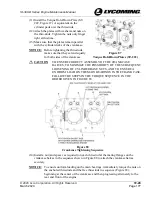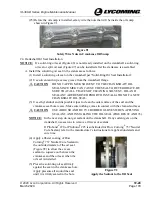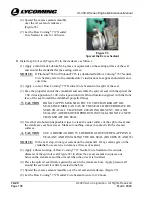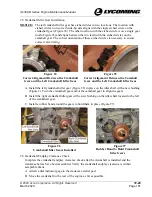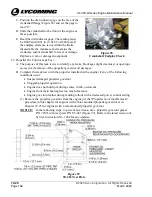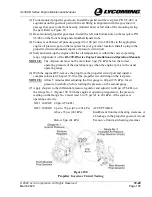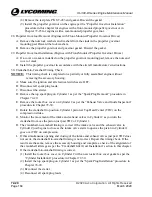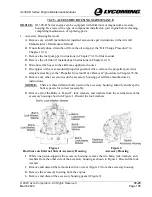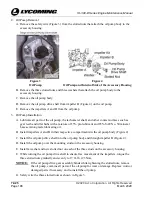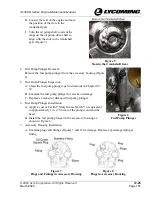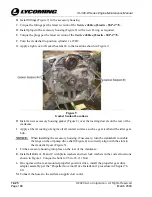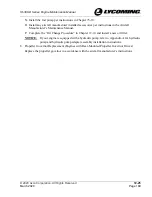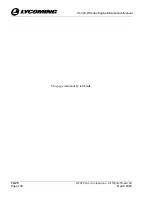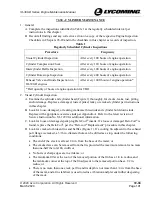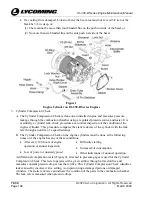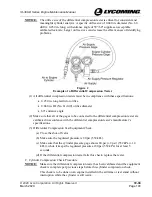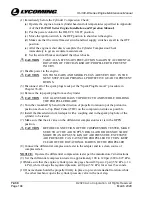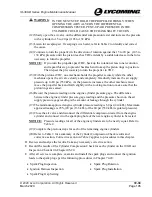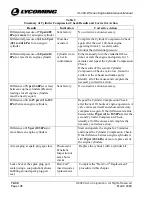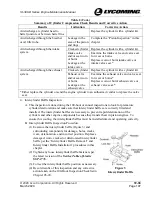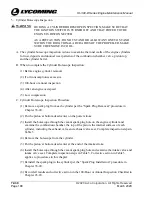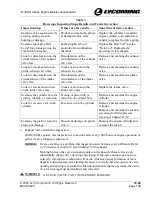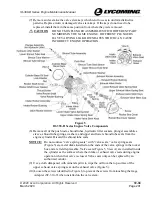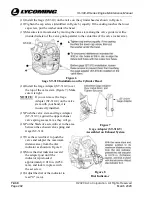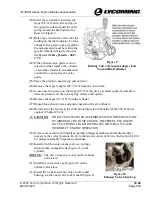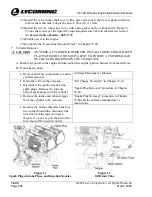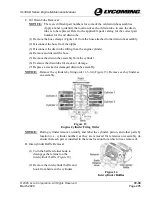
IO-390-D Series Engine Maintenance Manual
© 2020 Avco Corporation. All Rights Reserved
72-30
March 2020
Page 191
IO-390-D Series Engine Maintenance Manual
72-30 - CYLINDER MAINTENANCE
1.
General
A.
Complete the inspections identified in Table 1 at the regularly scheduled interval per
instructions in this chapter.
B.
Record all findings and any corrective action on a copy of the respective Engine Inspection
Checklists in Chapters 05-20 and in the checklists in this chapter as records of inspection.
Table 1
Regularly Scheduled Cylinder Inspections
Procedure
Frequency
Visual Cylinder Inspection
After every 100 hours of engine operation
Cylinder Compression Check
After every 100 hours of engine operation
Intercylinder Baffle Inspection
After every 100 hours of engine operation
Cylinder Borescope Inspection
After every 400 hours of engine operation
Exhaust Valve and Guide Inspection on
IO-390-D engines
After every 1000 hours of engine operation*
* Half quantity of hours of engine operation for TBO
2.
Visual Cylinder Inspection
A.
Examine the cylinder and cylinder head (Figure 1) thoroughly for cracks, leaks, rust, pitting
and/or damage. Replace a damaged, rusted, pitted, leaky or cracked cylinder per instructions
in this chapter.
B.
Look for loose, damaged, or leaking crankcase thru-studs and cylinder hold-down studs.
Replace with appropriate oversize studs per Appendix A. Refer to the latest revision of
Service Instruction No. SI-1290 for additional information.
C.
Look for loose or damaged spark plug Heli-Coil
®
inserts. If a loose or damaged Heli-Coil
®
is
found, replace the Heli-Coil
®
per the “Heli-coil
®
Replacement” procedure in this chapter.
D.
Look for cracked or broken fins and baffles (Figure 1). If a cooling fin adjacent to the exhaust
port flange is cracked, a 3/16 in. diameter hole can be drilled as a stop, under the following
conditions:
•
The end of the crack is at least 1/4 in. from the base of the metal; or
•
The cracked area can be removed from the fin, provided the maximum removal is no more
than one-half the total fin width; or
•
No burrs or sharp edges are in evidence; or
•
The minimum fillet at the root of the removed portion of the fin has a 1/4 in. radius, and
the minimum corner at the top of the fin adjacent to the removed portion has a 1/2 in.
radius; or
•
There is no more than one crack per fin and its depth is not more than 1/4 in. from the base
of the metal, and a fin stabilizer is used to reduce vibration and prevent further deepening
of the crack.

